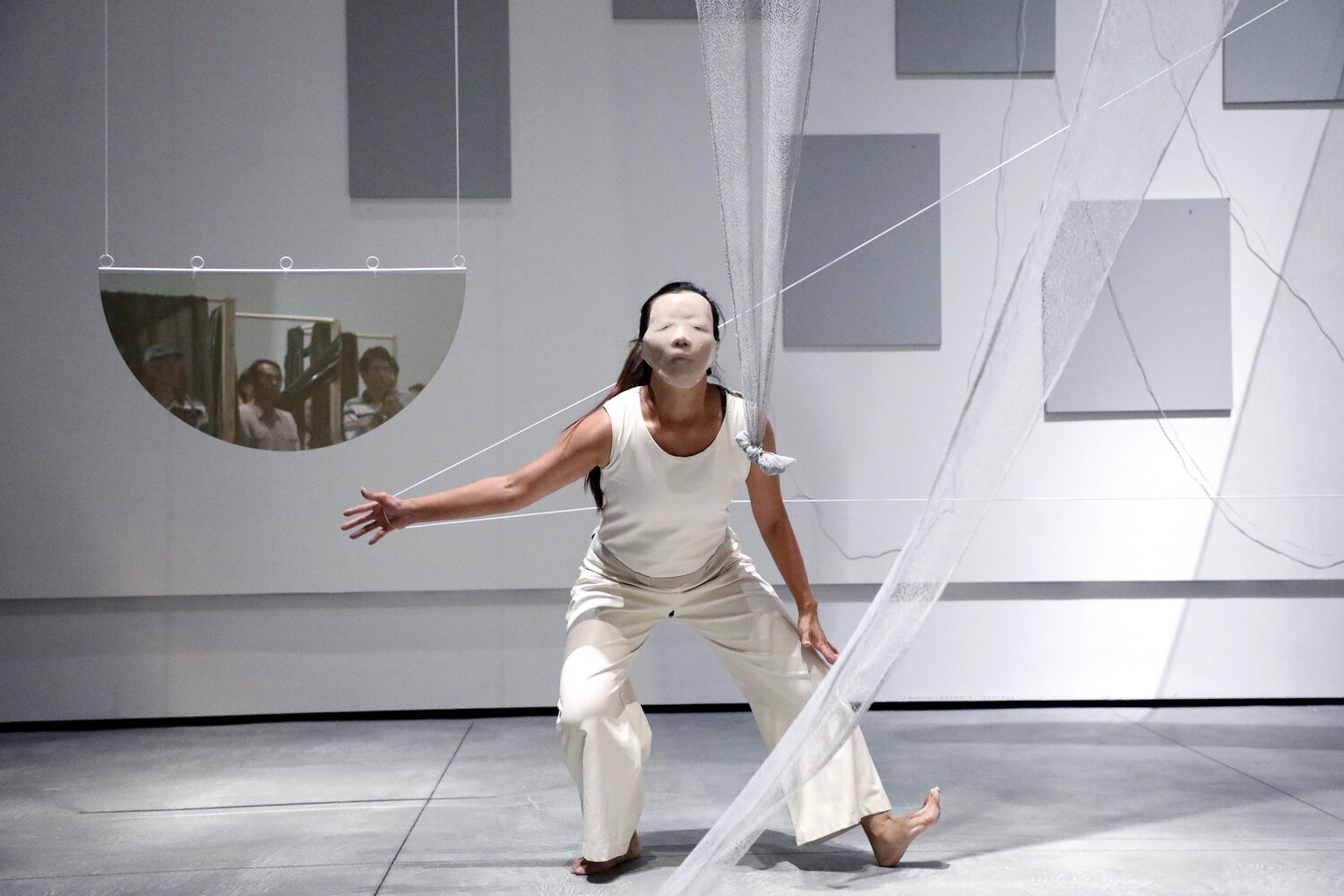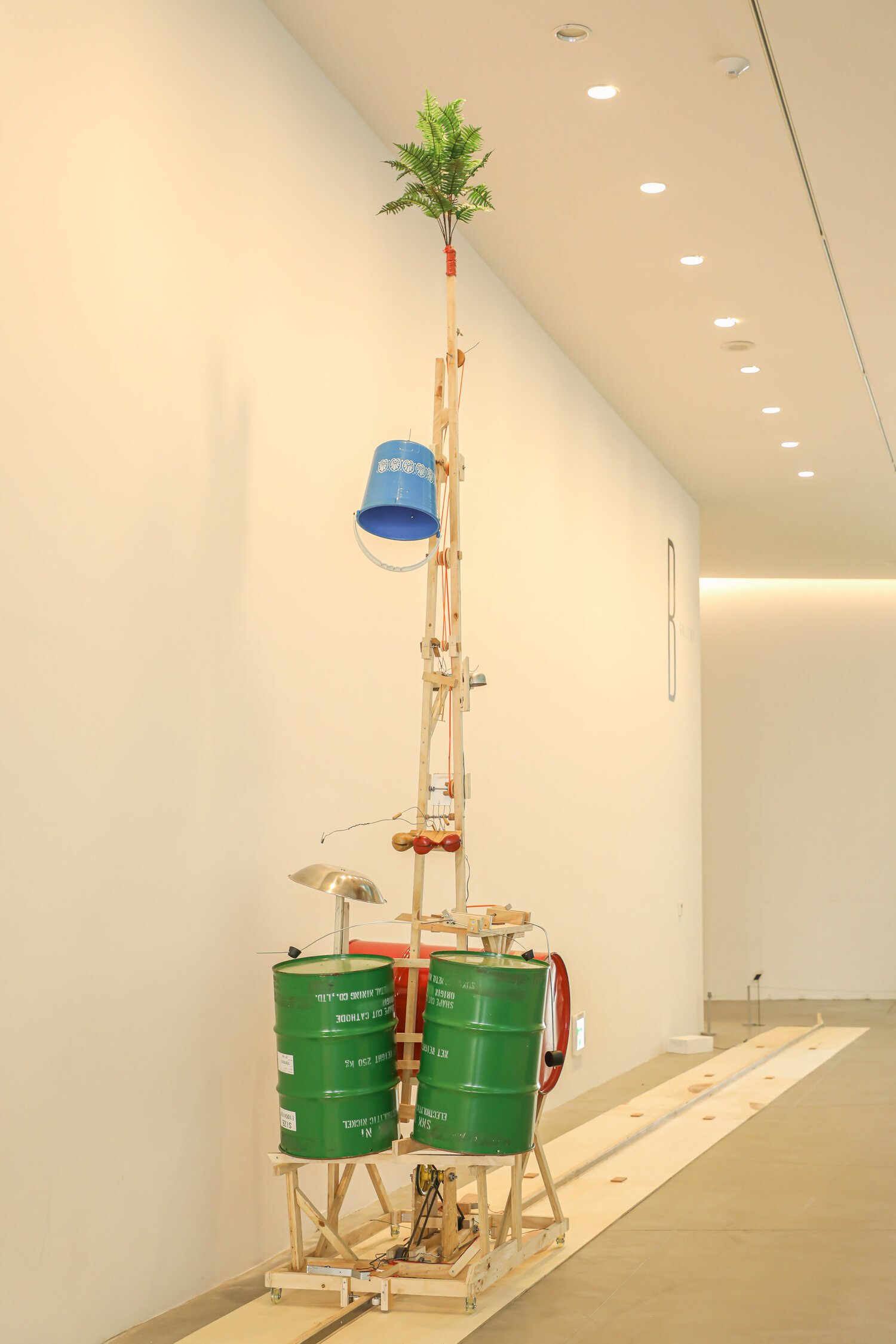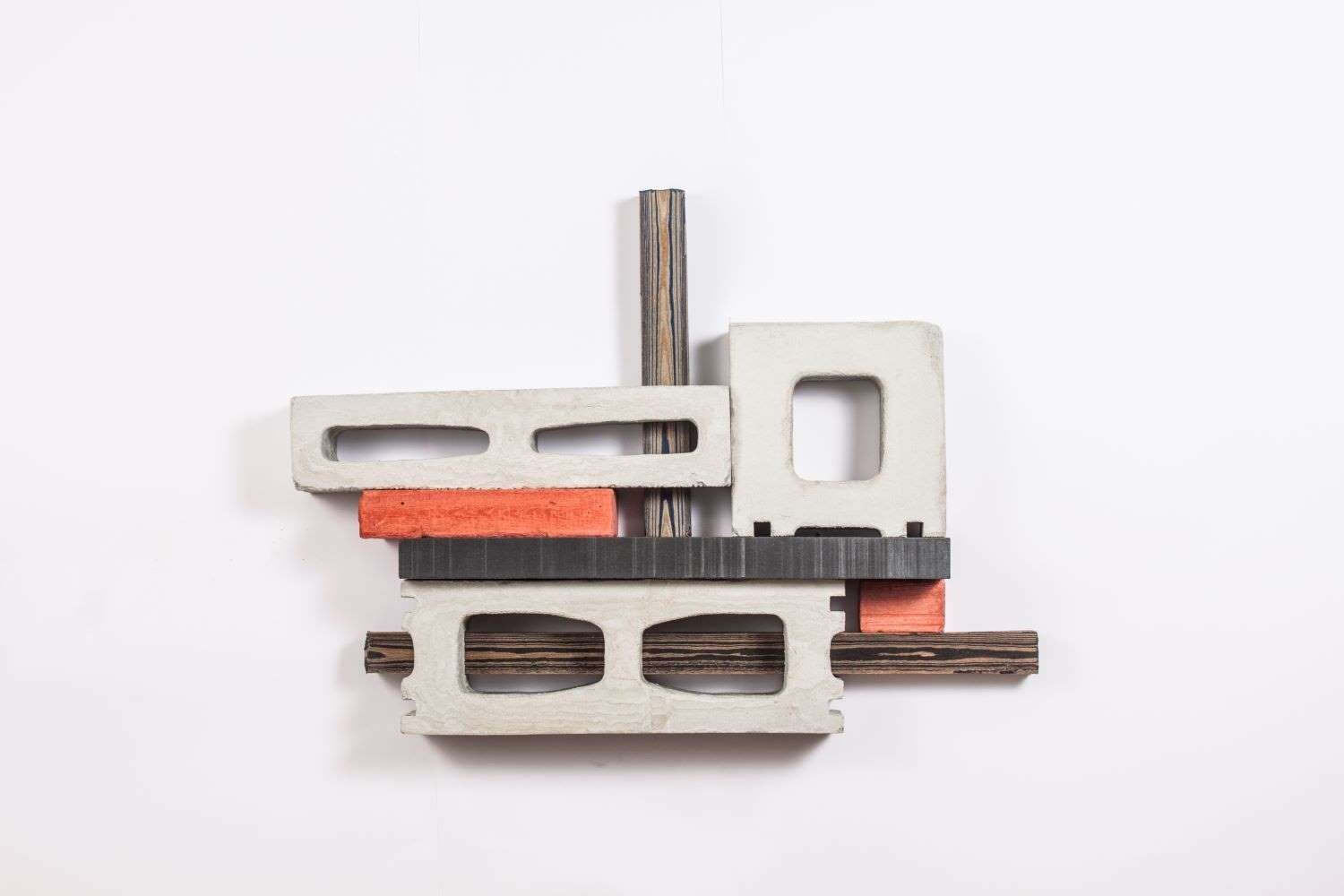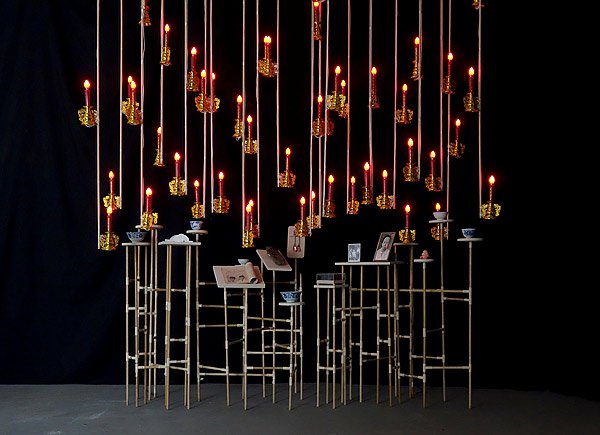'SUPER-TRAJECTORY' at Tainan Art Museum
New media art exhibition co-curated by tamtamART and INTER-MISSION
By Ian Tee
Ya-Wen Fu, 'Aiming, but where to IV', 2019, interactive sound-installation, video, performance. Photo documentation taken during the opening performance. Image courtesy of Tainan Art Museum.
After seven years of preparation, the Tainan Art Museum (TAM) opened in 2018. Its establishment is a highly anticipated addition to Taiwan's oldest city and former capital. What is lesser known to international audiences is Tainan's energetic art scene supported by alternative artist-run spaces and a younger generation of art practitioners studying at the local arts university. For them, TAM's arrival marks not only the first public art museum in southern Taiwan but also a major platform for new artistic expressions in the city.
'SUPER-TRAJECTORY' is the first show of contemporary art at TAM, co-curated by tamtamART and Singaporean collective INTER-MISSION. The exhibition showcases experimental media art by 16 international artists exploring issues in urban life. As suggested by the prefix "super" in its title, the works on view challenge artists to go beyond the limitations imposed by a chosen medium to work in cross-disciplinary modes. The result is a multi-sensory experience in which viewers are prompted to engage with analogue and digital technologies.
Weixin Chong, 'sft crsh ctrl', 2018-19, video, prints on silk twill and latex partitioning screens. Exhibition installation view in 'SUPER-TRAJECTORY' at Tainan Art Museum. Image courtesy of Tainan Art Museum.
At the exhibition opening, Taiwanese artist Ya-Wen Fu combines video elements with live performance in her work 'Aiming, but where to IV'. Using the taut string of a bow as a symbol for the potential unseen violence among people, her body activates elastic cords and springs embedded in the installation. Fu's real-time performance is juxtaposed against the character she plays in a slow motion video; the effect is a tense dance between two figures, one real and one virtual yet both of the same body.
Engaging with sensorial perceptions, Weixin Chong looks at how we connect with our bodies through the interface of digital media. Seductive textures are rendered flat in prints on smooth silk twill, while the video 'Eating Cake' shows a pair of hands tearing into a dessert. If Chong's evocative display shows how our senses of touch and taste can be mediated through sight, Chao-Hao Liao's 'Sheets Fences' alerts us to our eyes' fallibility. Using paper pulp, glue and pigment, the Taichung-born artist recreates the surface of bolted metal sheet to a hyper-realistic degree. What seems to be the effect of time on this wall is in fact an illusion.
Chao-Hao Liao, 'Sheets Fences' (detail), 2019, white glue, water-based pigment, paper pulp, wood. Image courtesy of Tainan Art Museum.
Jeremy Sharma, 'fidelity', 2018, sound installation. Exhibition installation view in 'SUPER-TRAJECTORY', at Tainan Art Museum. Image courtesy of Tainan Art Museum.
Drawing attention to the rich aural traditions of endangered cultures, Jeremy Sharma's sound installation 'fidelity' features songs about love and belief from various communities in Southeast Asia. The work mixes four tracks, including nostalgic melodies of the artist's Kristang heritage, a group descended from Portugese sailors who arrived in Malaysia in the 16th century, and rhythmic chants of the Rohingya which carry Persian and Arab legacies. Sharma's composition lays bare the harmonies and dissonances imprinted in the region's history, recording these voices so that they are heard.
Interestingly, not all the works on view utilise new media technology. Situated along the corridor between galleries, Japanese sound artist Nao Nishihara's tinker construction is a towering assemblage that slowly moves across a six-metre-long track. Its title 'Diligent Machine' suggests that the mechanism is constructed for work, yet its performance is unhurried. Reflecting on the hyper speed at which society moves today, Nishihara proposes a reconsideration of what efficiency and work entail.
Nao Nishihara, 'Diligent machine', 2019, mixed media. Image courtesy of Tainan Art Museum.
'SUPER-TRAJECTORY' comes off the heels of a few major collaborations between Taiwanese institutions and Singapore artists. Two recent examples are the 7th Asian Art Biennale curated by Ho Tzu Nyen and Hsu-Chia Wei, and 'Stories We Tell To Scare Ourselves With' curated by Jason Wee and Anita Huang at MOCA Taipei. In fact, tamtamART and INTER-MISSION's partnership began back in 2016, when the Singaporean collective participated in 'Osmosis – Audiovisual Media Festival' curated by tamtamART. Speaking about their latest collaboration, Urich Lau of INTER-MISSION says, "our approach as duo curatorial collectives also to look at today’s dichotomic relation with the obsession and at times, resentment of technology in everyday life."
Looking ahead, a follow-up presentation of 'SUPER-TRAJECTORY' is slated to open at the ArtScience Museum in Singapore in February 2020. The next installment will focus more on experimental forms of digital-based works and explore thematic frameworks around big data, smart cities and post-human discourses. Seminars by participating artists and curators will also be introduced into the programming. "Taken together, it is a more conclusive way of looking at today's state, out of the slumber of the 20th century and being in the dawn of the 21st century," Lau explains. "We aim to illustrate this new shift or trajectory."
'SUPER-TRAJECTORY' at Tainan Museum of Art is on view till 3 March 2020.


















